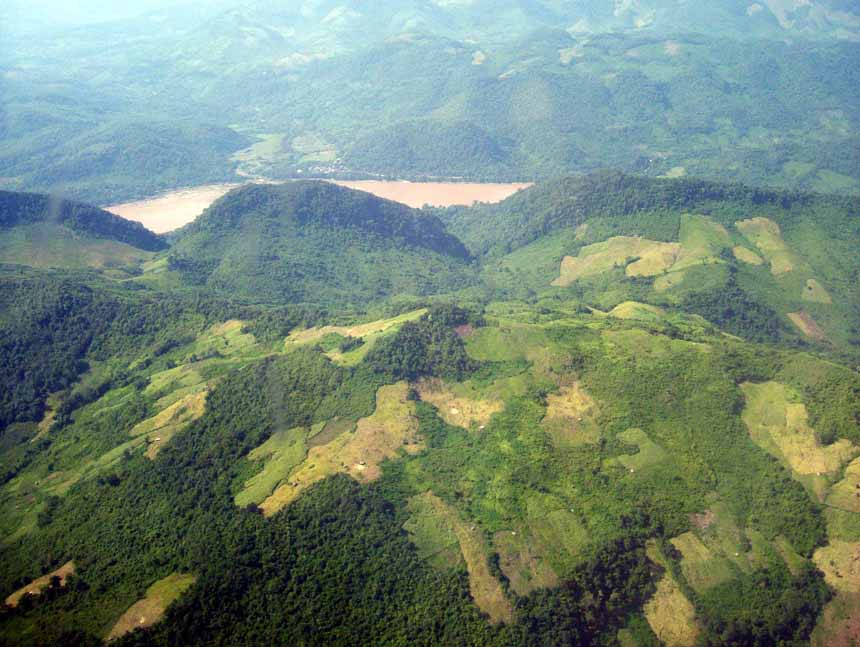| Publications ( )Project member | |||
|
|
|||
| H. Tabuchi, Y-I. Sato and I.Ashikawa (2007) Mosaic structure of Japanese rice genome composed mainly of two distinct genotypes.Breeding Science 57 : 213-221 (Hiroaki Tabuchi, Yo-ichiro Sato, Ikuo Ashikawa) | |||
| Kuroda, Y., Y.I. Sato, C. Bounphanousay, Y. Kono and K. Tanaka (2007) Genetic
structure of three Oryza AA genome species (O. rufipogon, O. nivara and
O. sativa) as assessed by SSR analysis on the Vientiane Plain of Laos.
Conservation Genetics 8:149-158.(Yo-suke Kuroda, Yo-Ichirou Sato) |
|||
| KawakamiS., , K. Ebana, T. Nishikawa, Y.-I. Sato, D. A. Vaughan and K.
Kadowaki (2007) Genetic variation in the chloroplast genome suggests multiple
domestication of cultivated Asian rice (Oryza sativa L.) Genome 50: 180–187.
(Yo-Ichiro Sato, Kouichi Kadowaki) |
|||
| Watabe,T. (2006) Des travaux dans les rizières. À propos des modèles en terre cuite des Jin orientaux découverts dans le Guangdong à Zhaoqing "Arts Asiatiques" Tome 61-2006 :87-97. (Takeshi Watabe) | |||
| Tsuneki, A., M. Arimura, O. Maeda, K. Tanno and T. Anezaki (2006) The early PPNB in the North Levant: A new perspective from Tell Ain el-Kerkh, northwest Syria. Paleorient 32/1: 47-71. (Makoto Arimura, Kenn-ichi Tanno) | |||
| Nozawa, S., M.Takahashi, H. Nakai and Y-I Sato (2006) Difference in SSR
variations between Japanese barnyard millet (Echinochloa esculenta) and
its wild relative E. crus-galli. Breeding Science 56:335-340. (Yo-Ichiro Sato) |
|||
| Ishikawa, R., S. Yamanaka Y. Fukuta S. Chitrakon C.
Bounphanousay K. Kanyavong L-H. Tang I. Nakamura T. Sato and Y-I. Sato
(2006) Genetic erosion from modern varieties into traditional upland rice
cultivars (Oryza sativa L.) in northern Thailand.Genetic Resources and
Crop Evolution 53:245-252. (Ryuji Ishikawa, Ikuo Nakamura, Tadashi Sato,
Yo-Ichiro Sato) |
|||
| Fukunaga, K., K. Ichitani and M. Kawase (2006) Phylogenetic analysis of
rDNA intergenic spacer subrepeats and its implication for domestication
history of foxtail millet, Setaria italica.Theoretical and Applied Genetics
113: 261-269. (Kenji Fukunaga)) |
|||
| Tanno, K. and G. Willcox (2006) How fast was wild wheat domesticated ? Science
311: 1886. (Kenichi Tanno, George Willcox) |
|||
| Tanno, K. and G. Willcox (2006) The origins of cultivation of Cicer arietinum
L. and Vicia faba L. : early finds from Tell el-Kerkh, north-west Syria,
late 10th millennium B. P. Vegetation History and Archaeobotany 15:197-204. (Kenichi Tanno, George Willcox) |
|||
| Fukunaga, K., H. Nasu, Y- I. Sato (2005) An attempt of the wheat/barley ancient DNA analysis of the samples from Kaman-Kalehöyük. Anatolian Archaeological Studies XIV :165-166. (Kenji Fukunaga, Hiroo Nasu, Yo-Ichiro Sato) | |||
| Ghimire, S. K., Y. Akashi, C. Maitani, M. Nakanishi and K. Kato (2005)
Genetic diversity and geographical differentiation in Asian common
wheat (Triticum aestivum L.), revealed by the analysis of peroxidase
and esterase isozymes. Breeding Science 55: 175-185. (Kenji Kato) |
|||
| Ishikawa, R., N. Toki, K. Imai, Y-I. Sato, H. Yamagishi, Y. Shimamoto,
K.Ueno, H. Morishima, T. Sato (2005) Origin of weedy rice grown in
Bhutan and the force of genetic diversity. Genetic Resources and Crop Evolution 52:395-403. (Ryuji Ishikawa, Yo-Ishiro Sato, Tadashi Sato) |
|||
| Tabuchi,H., Y-I. Sato and I.Ashikawa (2007) Mosaic structure of Japanese
rice genome composed mainly of two distinct genotypes. Breeding Science.
In-press. (Contribution No.8 Hiroaki Tabuchi, Yo-Ichiro Sato,・Ikuo Ashikawa) |
|||
| Ghimire, S. K., Y. Akashi, A. Masuda, T. Washio, H. Nishida, Y-H. Zhou,
C. Yen, X. Qi, Z. Li, H. Yoshino and K. Kato (2006) Genetic diversity and
phylogenetic relationship among East Asian common wheat (Triticum aestivum
L.), revealed by the analysis of five isozymes. Breeding Science56:379
- 387. (Contribution No.6 Hidetaka Nishida, Kenji Kato) |
|||
| Akashi, Y., K. Tanaka, M. T. Khaing, S. S. Yi and T. T. Chou, H. Nishida,
and K. Kato (2006) Genetic diversity and phylogenetic relationship among
melon accessions from Africa and Asia revealed by RAPD analysis. Cucurbit.
Proc. 2006 : 317-325. (Contribution No.5 Katsunori Tanaka, Hidetaka Nishida, Kenji Kato) |
|||
| Tanaka, K., K. Fukunaga, M. T. Khaing, Y. Akashi, H. Nishida, K. Kato (2006)
Polyphyletic origin of cultivated melon inferred from analysis of its chloroplast
genome. Cucurbit. Proc. 2006:372-379. (Contribution No.4 Katsunori Tanaka, Kenji Fukunaga, Hidetaka Nishida, Kenji Kato) |
|||
| Sakamoto, S., R. Ishikawa, I. Nakamura, Y-I.Sato, and Y.Shimamoto
(2006) Species identification of 6,000-years-old beans from Sannai-Maruyama
site, Aomori, Japan. Journal of Fossil Research 39 (1): 1-6. (Contribution No.3 Ryuji Ishikawa, Ikuo Nakamura, Yo-Ishiro Sato) |
|||
| Tanaka, K., A. Nishitani, Y. Akashi, Y. Sakata, H. Nishida, H.Yoshino and
K. Kato (2007) Molecular characterization of South and East Asian melon,
Cucumis melo L., and the origin of Group Conomon vars. makuwa and conomon
revealed by RAPD analysis. Euphytica 153: 233 - 247. (Contribution No.2 Katsunori Tanaka, Hidetaka Nishida, Kenji Kato) |
|||
| Furukawa, T., M. Maekawa, T. Oki, I. Suda, S. Iida, H.Shimad, I.
Takamure and K. Kadowaki (2006) The Rc and Rd genes are involved in proanthocyanidin
synthesis inrice pericarp. Plant Journal 49: 91 - 102. (Contribution No.1 Koichi Kadowaki) |
|||
| Symposium only project member | |||
| Proceedings of the Pre-symposium of RIHN and 7th ESCA Harvard-Kyoto Roundtable
(2006) Edited by Osada Toshiki with the assistance of Hase Noriko Research Institute for Humanity and Nature (RIHN) Kyoto, Japan |
|||
| Y. I. Sato, Domestication of crops: what is common and what is different? -Fudo and agriculture- (p.73-78) |
|||
| P. J. Matthews, The domestication of nitrient cycles: unifying principle
for thinking about the origins of agriculture? (p.80-95) |
|||
| T.Osada, How many Proto-Munda words in Sanskrit? -with special reference to agricultural vocabulary- (p.151-174) |
|||
| N.Saitou, Relationship between genetic and linguistic differentiation of people in Eurasia. (p.220-222) | |||

